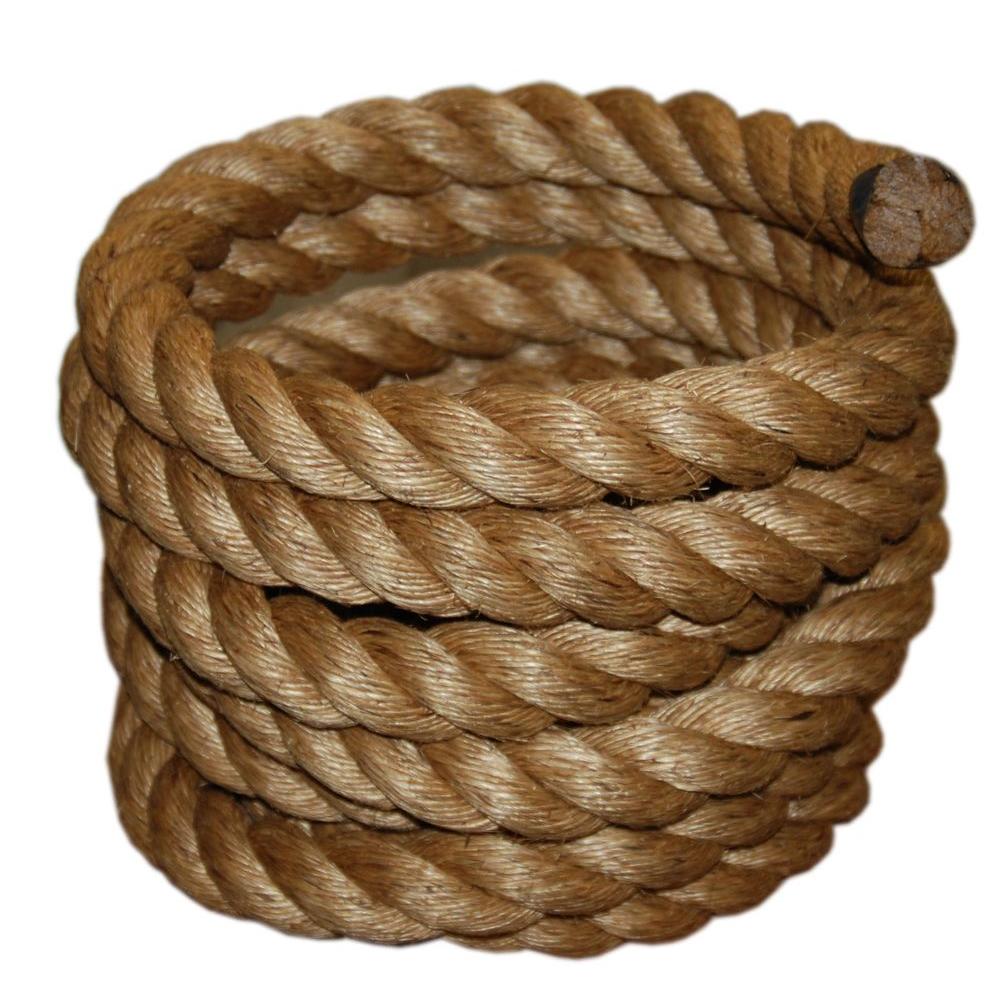Types and Usage
Rope may be constructed of any long, stringy, fibrous material, but generally is constructed of certain natural or synthetic fibres. Synthetic fibre ropes are significantly stronger than their natural fibre counterparts, but also possess certain disadvantages, including slipperiness.
Common natural fibres for rope are manila hemp, hemp, feathers, linen, cotton, coir, jute, straw, and sisal. Synthetic fibres in use for rope-making include polypropylene, nylon, polyesters (e.g. PET, LCP, Vectran), polyethylene (e.g. Dyneema and Spectra), Aramids (e.g. Twaron, Technora and Kevlar) and acrylics (e.g. Dralon). Some ropes are constructed of mixtures of several fibres or use co-polymer fibres. Wire rope is made of steel or other metal alloys. Ropes have been constructed of other fibrous materials such as silk, wool, and hair, but such ropes are not generally available. Rayon is a regenerated fibre used to make decorative rope.
This Ropes are mainly divided into two categories.
1. Rock climbing Ropes:
Dynamic Kernmantle rock climbing rope with its braided sheath cut to expose the twisted core yarns and core yarn plies.
Section through the same rope
The modern sport of rock climbing uses so-called “dynamic” rope, which stretches under load in an elastic manner to absorb the energy required to arrest a person in free fall without generating forces high enough to injure them.
Rock climbing ropes come with either a designation for single, double or twin use.
A single rope is the most common and it is intended to be used by itself, as a single strand.
Double ropes are thinner ropes, usually 9mm and under, and are intended for use as a pair. These ropes offer a greater margin or security against cutting, since it is unlikely that both ropes will be cut, but they complicate belaying and leading.
Twin ropes are not to be confused with doubles. When using twin ropes, both ropes are clipped into the same piece of protection, treating the two as a single strand. This would be favourable in a situation where there was a high chance of a rope being cut.
The butterfly coil is a method of carrying a rope used by climbers where the rope remains attached to the climber and ready to be uncoiled at short notice. Another method of carrying a rope is the alpine coil.
2. Aerial ropeRope is also an aerial acrobatics circus skill, where a performer makes artistic figures on a vertical suspended rope. Tricks performed on the rope are, for example, drops, rolls and hangs.They must also be strong [4] See also Corde lisse.
Usage of Rope:
Rope is of paramount importance in fields as diverse as construction, seafaring, exploration, sports, theatre, and communications, and has been used since prehistoric times. To fasten rope, many types of knots have been invented for countless uses.Pulleys redirect the pulling force to another direction, and can create mechanical advantage so that multiple strands of rope share a load and multiply the force applied to the end. Winches and capstans are machines designed to pull ropes.











